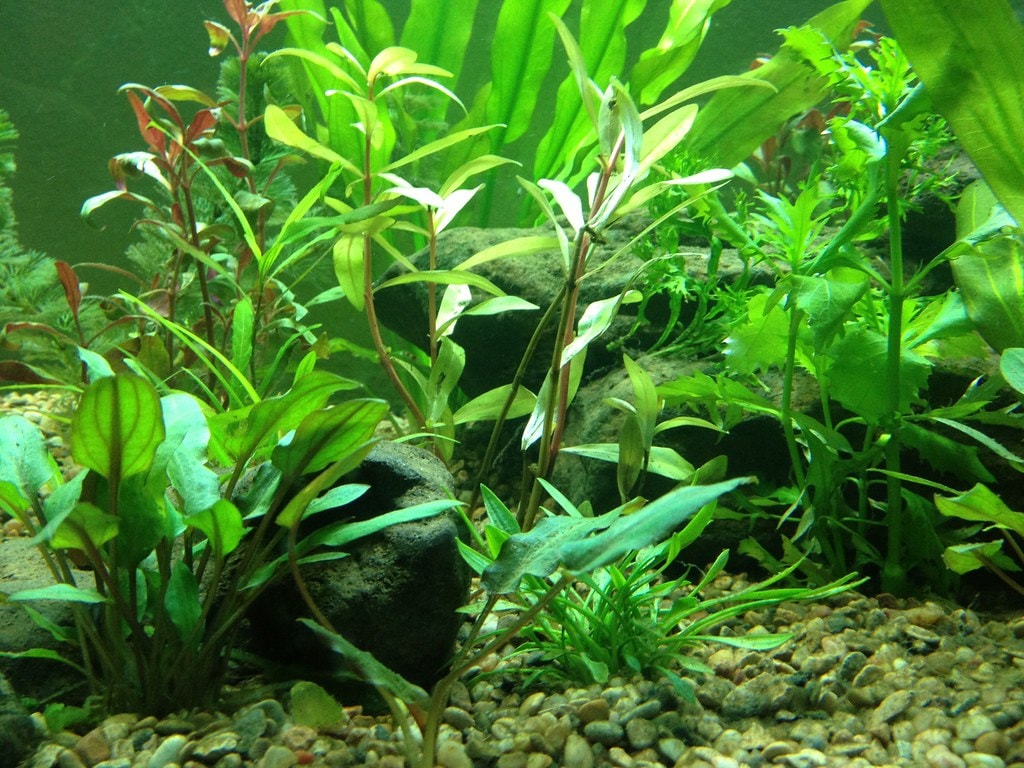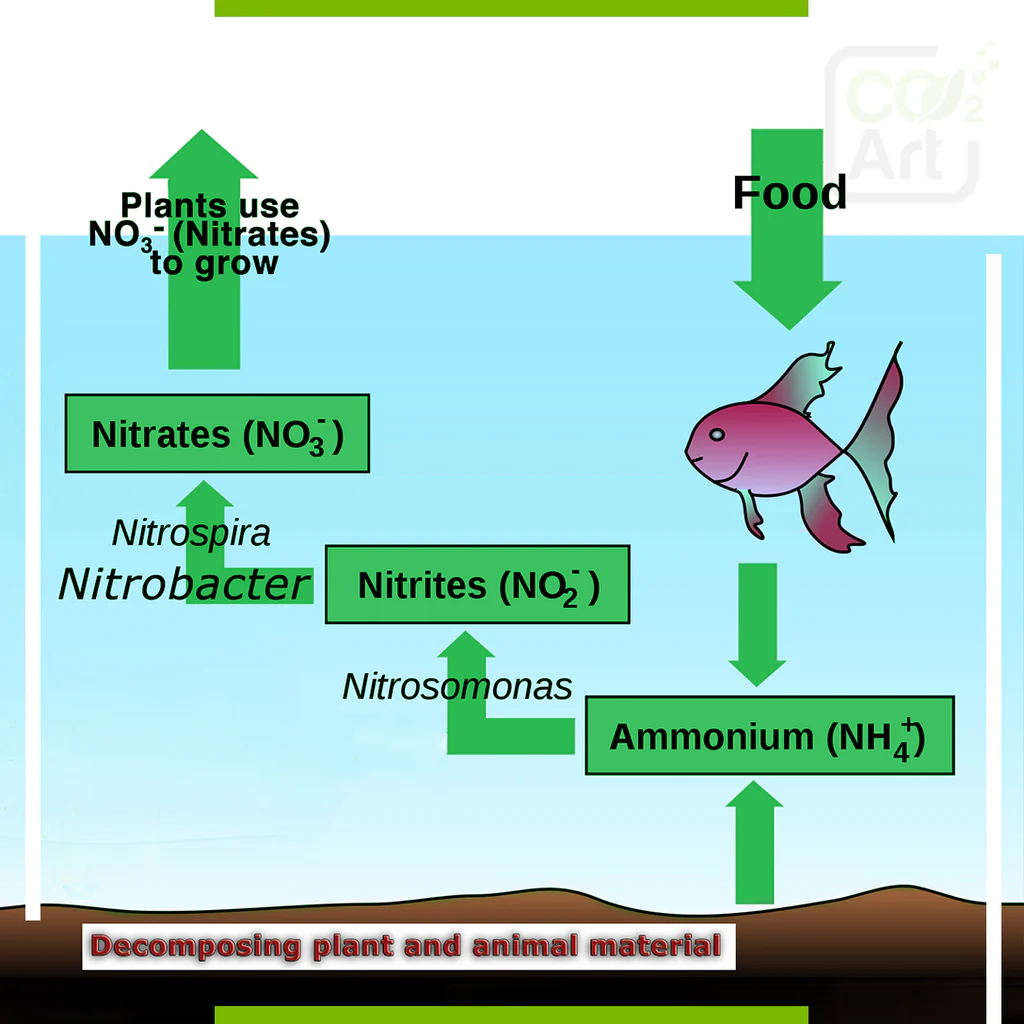10 common mistakes beginners make in planted aquariums
Understanding Why Aquarium Plants Struggle
Many beginners ask themselves, “why do aquarium plants die?” after watching once-vibrant greenery fade or melt away. Most often, the problem lies in imbalance — insufficient minerals, irregular lighting, or poor water circulation. Failing to cycle the tank properly can also create unstable conditions that stress both fish and plants.
Instead of seeing dying plants as a setback, think of them as indicators that your system needs fine-tuning. A yellow leaf might point to iron deficiency, while stunted growth could suggest a lack of CO2. Each plant’s reaction helps you understand what your aquarium ecosystem truly needs to thrive.

How to Build a Beginner-Friendly Planted Setup
Starting a beginner planted tank can be both exciting and confusing. New aquarists often focus on aesthetics without realizing that plant health depends on stable conditions. Choosing a medium-sized aquarium instead of a small one can make aquarium care easier and more forgiving for early mistakes.
A solid foundation starts with the basics — a gentle filter, balanced lighting, and a nutrient-rich substrate. Avoid overloading the system with equipment you don’t understand yet. Instead, learn how each component supports plant life before scaling up to advanced setups.
Selecting the Ideal Starter Aquarium for Plants
Choosing the right beginner planted aquarium involves balancing your enthusiasm with practicality. Overambitious designs with powerful lighting or complex CO2 systems can make maintenance overwhelming. It’s better to start slow and learn how plants respond to subtle environmental shifts.
Focus on ease of access and flexibility. A clear layout with manageable plant density allows for better observation and adjustment. As you gain confidence, you can introduce more demanding species and fine-tune lighting, nutrients, and filtration to suit their needs.
Keeping Your Setup Simple and Manageable
A beginner simple planted aquarium doesn’t mean a boring one — it means one that’s balanced and predictable. Beginners often overcomplicate things by mixing too many species or using equipment meant for advanced setups. Keeping things simple reduces stress for both the aquarist and the aquatic greenery.
Start with hardy species that tolerate a wide range of conditions. Resist the urge to tweak everything daily — stability leads to success. Once you’ve built a stable rhythm, your aquarium will grow more vibrant on its own.

Key Guidelines for Starting Off Right
There are many useful planted aquarium tips that can help you avoid the most common early mistakes. First, allow your aquarium time to mature — cycling the tank slowly helps establish beneficial bacteria. Second, resist overplanting in the beginning; too many plants competing for limited nutrients can hinder growth.
Consistency is more valuable than perfection. Maintain a simple weekly routine: monitor lighting hours, test water conditions, and adjust only when necessary. With patience and steady care, your aquarium will evolve naturally into a lush, balanced underwater landscape.
Mistake #1 – Skipping the Nitrogen Cycle
One of the biggest common mistakes new aquarists make is skipping the nitrogen cycle, a vital process that allows beneficial bacteria to convert ammonia into less harmful compounds. Without this step, a new tank becomes toxic within days, as uneaten food and fish matter quickly release ammonia. This is why adding fish too soon often leads to stress, disease, or death.
Before adding fish, it’s essential to let your tank mature naturally. This allows bacteria to colonize the substrate, filter, and decorations, stabilizing water conditions. Performing small, regular water replacement during cycling prevents excessive buildup while preserving the developing colony of beneficial bacteria. Patience here pays off — a fully cycled tank sets the stage for long-term success.

Mistake #2 – Neglecting Proper Lighting and Control
In planted aquariums, lighting determines whether plants flourish or fade. A common mistake is assuming more light equals faster growth. In reality, excessive brightness often triggers algae expansion, competing with aquatic flora for minerals and choking out new shoots. Low lighting, on the other hand, leaves plants weak and prone to melting.
Balance is key — moderate light paired with proper filtration and consistent water conditions keeps the aquarium thriving. Using a timer helps control how long the lights are on, preventing overexposure. Combine this with routine water exchange, gentle maintenance, and occasional trimming, and your aquascape will remain vibrant without constant intervention.
Mistake #3 – Overcrowding Your Tank
Adding many fish at once is a frequent mistake that stresses both livestock and live greenery. Overcrowded fish tanks lead to rapid spikes in ammonia, poor water quality, and increased algae growth. Beginners often underestimate how quickly new aquarium ecosystems can become unstable when too many fish are introduced prematurely.
To avoid this, start with a moderate number of fish and increase gradually once the nitrogen cycle is established. Careful rooting of freshwater flora also helps absorb excess nutrients from fish waste, upkeeping a healthier tankenvironment. Regular water changes and proper filtration ensure the aquarium remains balanced as fish populations grow.
Mistake #4 – Ignoring Substrate and Planting Techniques
Choosing the right substrate is essential for proper placing and plant growth in a aquascape. Many beginners place plants directly into plain gravel or sand, not realizing that nutrient-rich substrate provides long-term stability. Using root tabs or layering a nutrient base ensures plants roots can thrive, supporting aquatic flora and reducing the need for constant supplementation.
Proper planting technique also impacts algae control. When plants are securely rooted and spaced correctly, they compete with algae for nutrients, helping prevent algal bloom in aquarium systems. Combine this with water changesand filtration, and your tank will remain a sustainable and visually appealing environment.
Mistake #5 – Rushing to Add Fish
One common mistake is immediately adding fish to a new tank before the ecosystem has stabilized. Doing so overwhelms the developing nitrogen cycle, causing spikes in ammonia and negatively affecting water quality. Beginners often assume that their starter tank can handle multiple fish from the start, but this is rarely the case.
Patience is key. Introduce fish gradually, monitor aquarium chemistry, and manage consistent water changes to ensure a thriving environment. Proper filtration and careful planting of greenery will help control nutrient levels, reduce algae, and support the growth of both plants and livestock.
Mistake #6 – Neglecting Regular Maintenance
Another frequent mistake is neglecting maintenance routines, including water changes and filter cleaning. Even a well-established green tank can suffer if debris from fish waste and uneaten food accumulates. Poor tank conditions stresses fish and can trigger unwanted algae growth.
Implementing a consistent maintenance schedule ensures a balanced aquarium. Monitoring tank conditions, trimming overgrown plants, and checking substrate health keeps the tank visually appealing and biologically stable. Regular water changes combined with careful planting practices will help prevent future issues and keep your first tank thriving.

Mistake #7 – Overfeeding and Excess Fish Waste
Overfeeding is a frequent mistake in first tank setups. Leftover food decomposes in the substrate, releasing ammonia and contributing to poor water quality. Too many fish in a small tank amplify this problem, as accumulated fish wasteoverwhelms the system, promoting algae expansion and stressing both plants and livestock.
Maintaining control over feeding schedules helps prevent these issues. Using shrimp or other cleanup crews can aid in breaking down leftover food, while regular water changes and filtration keep aquascape balanced. Proper plantingof aquatic flora also absorbs excess nutrients, reducing algae proliferation and supporting a balanced environment for your fish.
Mistake #8 – Neglecting CO2 Injection
A frequent mistake in new aquarium setups is ignoring the benefits of CO2 injection for planted tanks. Without adequate carbon dioxide, greenery struggle to photosynthesize efficiently, slowing planting growth and allowing algae to gain an advantage. Beginners often rely solely on light and nutrients, not realizing that CO2 is essential for a vibrant and balanced ecosystem.
Integrating CO2 properly helps maintain aquarium conditions and supports the plants in absorbing nutrients from the substrate. Using a diffuser or pressurized system, combined with monitoring aquarium chmistry , ensures that both fishand plants thrive. Regular observation and gentle adjustments prevent fluctuations, fostering a healthy environment and minimizing algae problems.

Mistake #9 – Neglecting Livestock Compatibility
A frequent mistake beginners make is not considering how different fish species interact in a planted tank. Some fish are territorial or aggressive, which can stress other fish and damage live plants. Incompatible combinations often lead to poor water quality, increased algae growth, and unnecessary stress for all inhabitants.
Researching each species’ behavior and requirements before adding fish ensures a harmonious environment. Proper planting and strategic placement of hiding spots allow both fish and shrimp to feel secure. Regular water changes and monitoring water parameters help maintain a stable ecosystem, promoting a lush and balanced tank.
Mistake #10 – Impatience and Skipping Maintenance
A lack of patience is a frequent mistake that can undo weeks of careful setup. Beginners often rush to see results, overfeeding fish or trimming plants too aggressively, which destabilizes planted tanks. Skipping maintenance routines like water changes, filter cleaning, and monitoring water parameters increases algae outbreak and puts both fish and plants at risk.
Establishing a simple, consistent maintenance schedule is key. Weekly water changes, checking substrate, and observing how fish interact with live plants allow you to anticipate problems before they become serious. Patience, along with careful monitoring, ensures that your first tank remains a balanced and thriving ecosystem.
Bonus Tip – Establishing a Sustainable Maintenance Routine
Neglecting regular maintenance is a frequent mistake that threatens both fish and plants in planted tanks. Consistent monitoring of water parameters, weekly water changes, and periodic filter checks ensure the tank stays balanced and healthy. Proper planting techniques also support nutrient absorption and reduce stress on the ecosystem.
Creating a structured routine helps prevent excess algae and allows fish to thrive. Gradually adjusting light, trimming plants, and observing livestock behavior promotes a sustainable system. This approach minimizes surprises and keeps your first tank visually appealing and biologically stable.
Conclusion – Growing with Experience
Avoiding common mistakes is the foundation of a successful planted aquarium. By carefully selecting compatible fish and plants, respecting the nitrogen cycle, and monitoring water parameters, beginners can create a thriving aquarium. Observing how fish, shrimp, and plants interact helps refine care routines over time.
Patience and consistent maintenance allow both fish and plants to flourish. A balanced tank supports diverse fishspecies and encourages healthy growth of plants, while preventing excessive algae. With steady care, your new aquarium will become a vibrant, sustainable ecosystem that brings enjoyment and learning for years to come.



